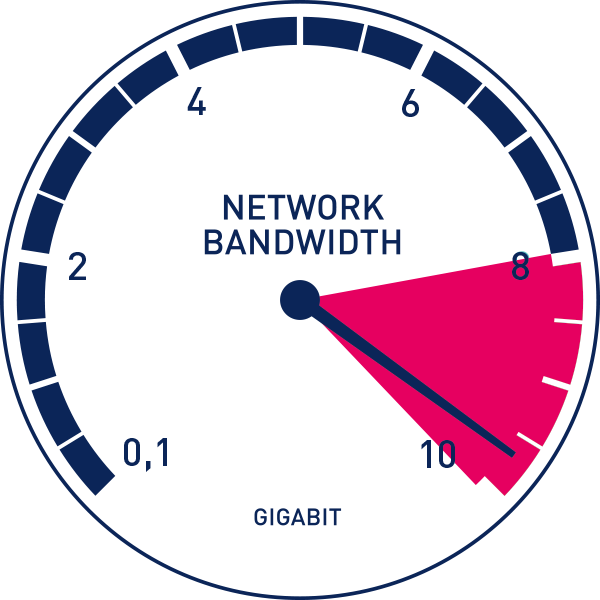

The numbers below are the maximum bandwidth speeds according to the standard or specification. Wireless network connection speeds vary widely based on the conditions of the connection.
#Network bandwidth download#
Wireless network standard maximum download speeds OC 12 (Ficer optic leased landline connection) OC3 (Ficer optic leased landline connection) Wired bandwidth standards for connections Dialup ModemĮ1 (Digital leased landline connection European)

Actual bandwidth depends on many factors including environment, cabling, and usage, and is usually less than the theoretical maximum. Some types of connections have a maximum defined bandwidth. Once bandwidth usage patterns are understood, and if specific users or applications are degrading network performance for others, tools can be used to limit the amount of bandwidth they are using. Once determined, a continuous measurement will ensure that all users get the necessary bandwidth. In order to implement proper bandwidth management, or Quality of Service (QoS) controls, one must first understand what bandwidth is used.
#Network bandwidth series#
A series of measurements can be more useful when determining averages or trends. As a result, a single bandwidth measurement says very little about actual bandwidth usage. In real world networks, bandwidth varies over time depending on use and network connections. This is useful for billing based on how much bandwidth is ‘normally’ used in a set period. The idea is to continuously measure bandwidth usage over time, and then remove the top 5 percent of use. This is most useful for billing based on how much bandwidth is used.ĩ5th percentile method – To avoid having bandwidth measurements skewed by spikes in usage, carriers often use the 95th percentile method. Total transfer method – Counts all traffic across a period of set time, typically a month. Goodput is calculated by dividing the size of the transferred file by the amount of time the transfer took. Goodput – Measures the amount of useful data that is transferred, excluding undesirable data such as packet retransmissions or protocol overhead. Measured in bytes per second, throughput can be compared to the effective bandwidth and the theoretical maximum as a way of determining how well the connection is performing. Throughput is the size of the transfer divided by the time it takes for the transfer to complete. Throughput – The average rate of successful data transfer useful for understanding the typical or usual speed of a connection. Necessary for understanding the amount of traffic a connection can support. Sometimes considered the best usable bandwidth. Always lower than the theoretical maximum. Typically, the theoretical maximum is only used for comparison as a way of determining how well a connection is functioning compared to its theoretical maximum potential.Įffective bandwidth – The highest reliable transmission rate. The theoretical maximum transfer rate cannot be achieved in actual installations. Theoretical maximum – The highest transmission rate under ideal circumstances. While there is no way to measure total available bandwidth, there are many ways to define measured bandwidth, depending on the need. Most internet speed tests use this method to calculate the connection speed of a user’s computer to the internet. The result is converted into bps by dividing the size of the files by the amount of time the transfer required. The resulting measurements are then expressed as a per-second number.Īnother method of measuring bandwidth is to transfer a file, or several files, of known size and count how long the transfer takes. Typically, to measure bandwidth, the total amount of traffic sent and received across a specific period of time is counted. PRTG provides a graphical interface and charts for measuring bandwidth trends over longer periods of time, and can measure traffic between different interfaces. Each side displays the number of bytes transmitted and the time for each packet to complete the one-way trip. One host is the receiver, the other the sender. TTCP measures throughput on an IP network between two hosts. Common bandwidth measuring utilities include the Test TCP utility (TTCP) and PRTG Network Monitor, for example.
#Network bandwidth software#
Measuring bandwidth is typically done using software or firmware, and a network interface.


 0 kommentar(er)
0 kommentar(er)
